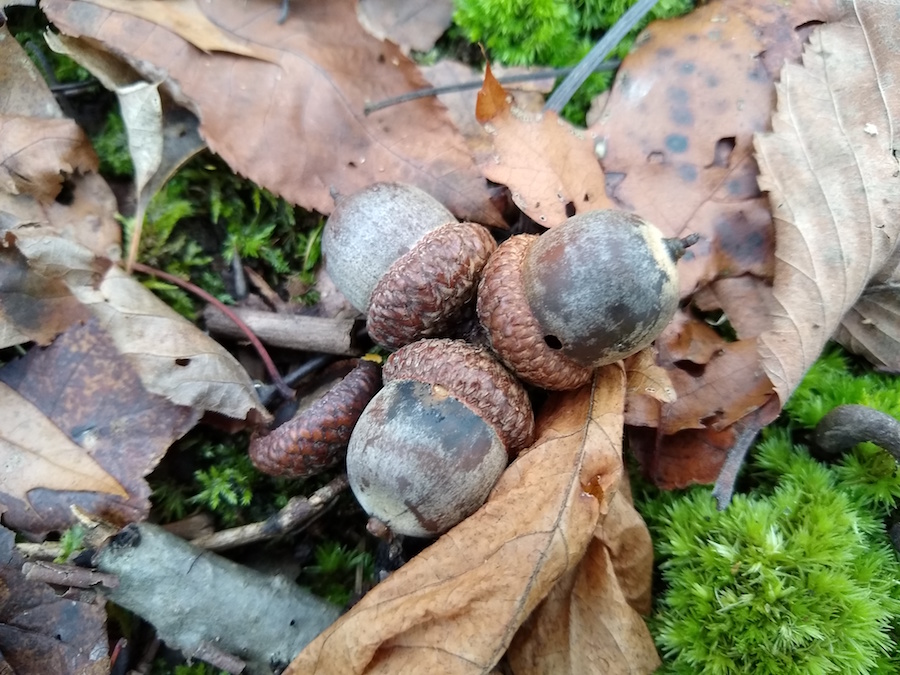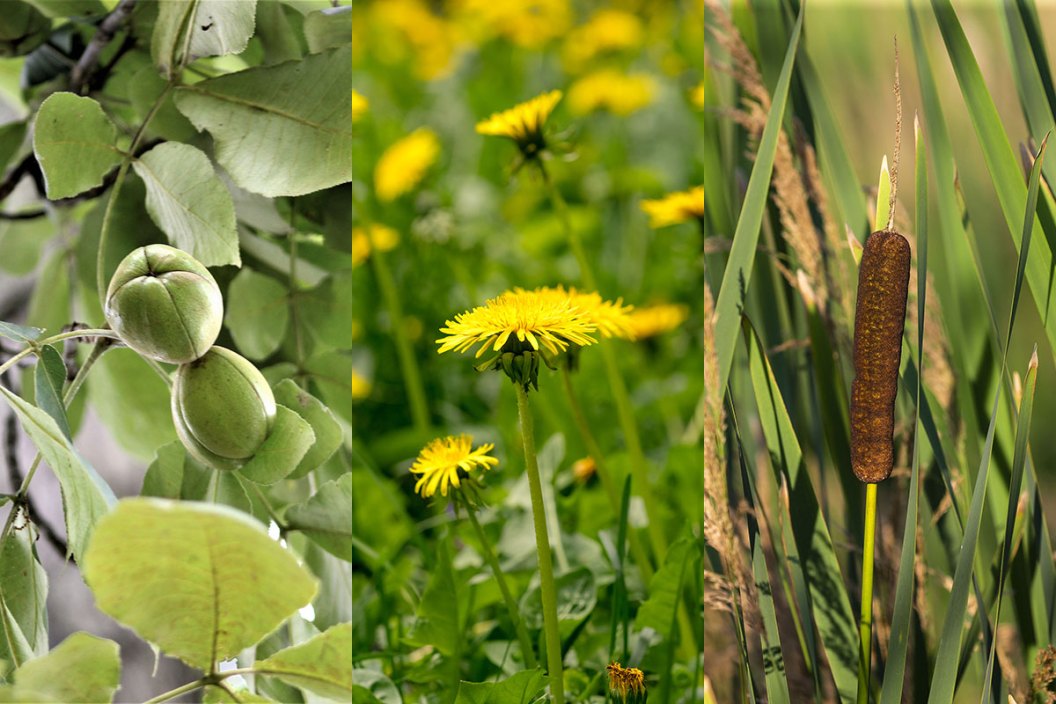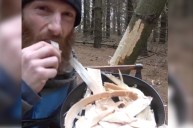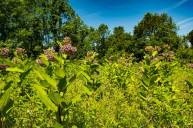Here are three easy wild survival foods that you can eat in a survival situation.
These three wild survival foods are readily available and easy to identify in an emergency situation, but honestly can be eaten at any time.
The point is to not wait until a survival situation to know how to find them and other edibles in the event that your food supply has run low.
In fact, there are many wild edible plants along with their fruits and nuts that can be used as sustenance. These include trees nuts, wild plants, roots, and even flowers of common organic vegetation that have protein and a high calorie count to sustain you in a time of need.
One of the best reasons to list these three wild foods is that they can be found in easy to locate areas, they can be easily harvested, and they can be eaten raw or uncooked. In another sense, they can be taken with a minimum of tools or strictly by hand.
The truth is that if you are going "off-grid" as they say, or will be trekking out of the reach of help or simple human contact, you should be carrying with you all of the essential tools you will need for survival in your backpack such as a knife, fire making tools, and a first aid kit.
But if your food runs out, you will need some wild alternatives to sustain you. These may be the three easiest to apprehend.
Cattails
You may have heard of this as a food source, but cattails are also one of the most common plants that occur in and around wetlands in virtually every U.S. state and most of Canada.
These distinctive plants grow out of the water, or very near the water's edge, and have long reeds with brown or slightly red tubers near the top that can sometimes look a bit like a skinny burnt corndog.
Maybe the best part of this wild plant is that most of it can be eaten in some way, and that gives it a special standing in the wild survival foods category. In the early part of the summer the unique flower top of the cattail can be eaten. On top of that, it can broken open, dried, and used as an excellent fire starting material.
One of the best ways to harvest the cattail is by finding the shoots that emerge from the summer's growth and follow it down with your hands to collect as much of the new growth as possible. Reaching and extracting the stalks and roots can be extra valuable, as they can be eaten as well.
A knife helps, but isn't entirely necessary.
Maybe the best way to find out what the cattail is really all about is to find some and take it home under normal circumstances,. Start with the root, and fry it in a skillet with some butter.
It should be said that cattails absorb and hold many of the surrounding pollutants of its environment and should only be used from wild areas. We don't recommend that you ever eat cattail from an urban or suburban area, especially from around a golf course as toxins such as pesticides and fertilizers are common in these areas.
Dandelions
The dandelion is one of the few weeds that is not only completely edible, but the leaves, seeds, flower, and roots can all give you much needed calories. You may not think of the dandelion as a root vegetable, but its root system is indeed edible. The only problem is that those of us with a lawn know all too well how difficult it is to get the entire thing out of the ground!
Since the plant was introduced into North America it has caused no end of consternation for lawn owners and other greens keeping people as it spreads like, well, the weed that it is.
It is said that the dandelion came across the Atlantic with the original European settlers, maybe even on the Mayflower as a duel purpose plant, both for medicinal purposes and as a food. Raw dandelion greens have a high vitamin A, C, and K content, making them great for feeding the body in an emergency situation or at any time.
Dandelions can be made into tea and used as an ingredient in soft drinks, but most famously the flower petals can be used to make dandelion wine.
In my youth my mother would gather dandelions from our yard (long before any of us had ever heard of weed killer) to make the most wonderful warm salad using vinegar and bacon bits.
As said for the dandelion, we again don't recommend that you use any of these plants from urban or suburban areas, including from around a farm field since the farmers that work hard to grow our food need to use pesticides as well.
Acorns/Hickory Nuts/Black Walnuts

Craig Raleigh
Oak trees are found in all the Lower 48 states and most of Canada. These grow in the form of red oaks and most importantly white oaks.
While they are still good in an emergency situation raw (in small numbers) they are much safer to eat by leeching out the bitter tannins. This is to say that you will want to husk them and mash up the acorns, then run cold water over and through them several times until the acorns only taste nutty and the bitterness is gone.
Acorns have the right amount of calories and fat content that can sustain a person until help arrives.
Hickory nuts are almost as widespread as acorns, but are certainly more common east of the Mississippi River. Hickory nuts are harder to deal with in that they have a much more difficult shell to crack open to reach the nut.
Hickory trees can be identified by their compound leaves, or leaves that have a stem with either five or seven separate leaves on it denoting whether they are a Shagbark Hickory or a Shellbark Hickory tree. Either tree's nuts can be eaten.
When collecting hickory nuts a good point of reference is to put them in some water to see if any of the nuts float. Any that don't sink to the bottom can be discarded, as they likely have a bug infestation or rot. This is usually done in a normal, at-home environment, but in the woods you are going to have to eat what you can collect, only discarding what can be visibly seen.
Nuts that have holes or cracks in them, or are lighter in weight compared to others, should probably be skipped over.
Black walnuts are one of the most easily recognized of the nuts due to their yellow or greenish shell. That shell can reach a color close to black later in the season or after they've been on the ground for a while. Walnuts are also a hard nut to crack and you're going to need a couple of rocks, a survival tool, or your imagination to open them.
Like the hickory nut, the black walnut has a high calorie count and can be harvested and stored for future use, or more importantly eaten right away.
Drying and curing black walnuts is more about making them taste like what you and I are used to, but in the wild your biggest obstacle will be simply extract the edible parts. Short of a hammer or a vice, you will need one rock to set the nut on, and one to strike it from the top; a pair of gloves would help too.
Final Thoughts
Honorable mention goes to beech nuts, which can be seasonal and a bit more limited in where they can be found, as well as wild asparagus, chicory, purslane, wild onion, and edible mushrooms like morels. This is not to mention things like grasshoppers, grubs, even certain non-toxic amphibians and bird eggs.
Survival guides and survival skills are two separate things, especially when it comes to edibility in nature. It can always help to carry a field guide with you on your journey to help you find the things that are safe and keep you away from look-alikes. And as hunters and fishermen will tell you, not everything that we can eat comes from the grocery store.
Looking for a little more or even hot lunch for your hunting blind? Follow my webpage, or on Facebook and Twitter.
NEXT: RV CAMPING VS. TENT CAMPING: IT'S TIME TO TAKE SIDES
WATCH




